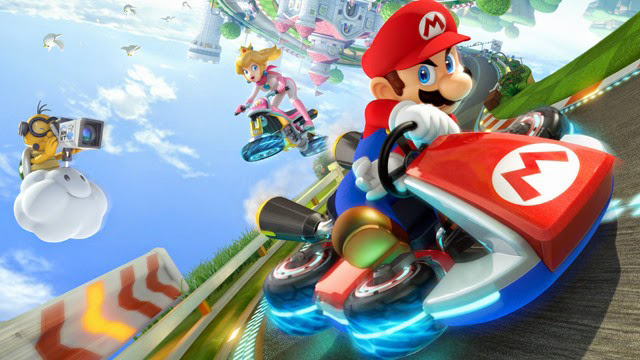

Video games as a medium have always kept narrative design in their periphery. This is no surprise, given that they were first designed to function as a virtual playground. Game developers have, for the most of the medium’s history, been understandably too busy programming to concentrate on writing. Giving Mario a believable motivation for breaking blocks and collecting coins was a secondary concern as his jump mechanics were polished over the years. But now the year is 2015, and the famous plumber, like many other video game characters, has remained extremely popular over the past couple of decades. The fastest selling entertainment product of all time is “Grand Theft Auto 5” and military shooters, such as “Call of Duty,” dutifully and reliably rake in profits.
Yet storytelling does not seem to have risen in game makers’ list of priorities. The campaigns of aforementioned bestselling military shooters shrink in every installment, serving as extended tutorials meant to showcase their new gameplay developments and thoughtless jingoism. There is even the current trend of open world videogames as embodied by the “Elder Scrolls” and “Fallout” franchises, in which the sense of exploration and world-building are prioritized above all else, continue to take the hands-off approach to storytelling, opting to have the players imagine their own stories.
It is important to note that these games enjoy not only commercial but also critical success. Fans of the respective series gather in droves and cheer at the announcement of each installment as the reviewers reliably hand out the eights and nines and the game of the year awards. Perhaps this speaks to the relative youth of the medium. No movie or a book franchise could consistently achieve equal commercial and critical success through cinematography or beautiful language alone. Yet in video games, poor storytelling is expected and overlooked. As someone who has wasted away too many hours playing video games, I think this is a glaring issue that the medium desperately needs to resolve.
One might argue that the main point of video games is the gameplay rather than the story. After all, historically, commercially and functionally, gameplay has always been what distinguishes the video game from other media. If “Batman and Robin” or an 1980s Batman comic deliver a boring plot, it is panned because it has missed the mark on its its main goal: good storytelling. But if a game such as “Batman: Arkham Origins” delivers a similarly lackluster plot, it still has the smooth, satisfying combat to offer. This objection deeply worries me, because it means that video games are under no pressure to pursue any artistic ambition in order to stay relevant.
Perhaps one can argue that polished gameplay is in itself an artistic ambition. But to me that just does not seem to be the case. Gameplay, if it is indeed art, does not seem to offer the same level of artistic experience that a good story can. Gameplay is about getting from one point to another. It is busywork. If a game can make that busywork seem fun through shooting, jumping, punching, talking, walking and racing, it is a game with good gameplay. And the actions taken to ameliorate the busywork can be more and more refined as technology improves over time, but that does not change the fact that it is busywork. Whether Mario jumps to reach the mushroom or double jumps and floats for a bit with his tanuki tail to reach the mushroom, the fact remains that Mario is reaching for the mushroom.
That is to say, improvements in gameplay ultimately do not change the meaning of the action undertaken in a video game — but a good storyline can. Mario games have the narrative Mario saving Princess Peach from the clutches of the evil Bowser. With this simple set-up, the action of reaching for the mushroom takes on a new meaning: The mushroom becomes a means to an end, not only to finish the level but also to facilitate the rescue of the princess. Now imagine Mario, Peach and Bowser having fleshed out personalities and motivations. Mario is no longer simply the player avatar: He’s a protagonist. Peach is no longer simply an anthropomorphic trophy: She’s an imperiled character. Storytelling is in essence the act of creating and interacting with meaning, and as such it serves a purpose separate from gameplay. To place gameplay alone as the centerpiece of game design is an inherently limiting act that deprives the medium of the artistic pleasure that other media can readily offer.
Thankfully, videogames have not yet completely given up on storytelling. The medium is currently at a crossroads. On one hand, games like “Undertale” and “Portal” experiment with ways to tell stories in a way that is native to gaming, through atmosphere and interactivity. On the other hand, we still have the graphically and functionally spectacular “Triple A” releases whose characters and setting ring hollow. It is a tough position for this medium that has been forced to mature too quickly as the popularity of video games has exploded. But it is a choice the industry must face, and to me, it seems that video games should be held to higher standards when it comes to narrative design.